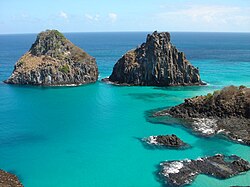References
- ↑ Bouvier, Clément; Balouin, Yann; Castelle, Bruno (2017). "Video monitoring of sandbar-shoreline response to an offshore submerged structure at a microtidal beach" . Geomorphology. 295: 297–305. Bibcode:2017Geomo.295..297B. doi:10.1016/j.geomorph.2017.07.017. ISSN 0169-555X.
| Management | ||
|---|---|---|
| Hard engineering | ||
| Soft engineering | ||
| Related topics | ||
| | This oceanography article is a stub. You can help Wikipedia by expanding it. |


